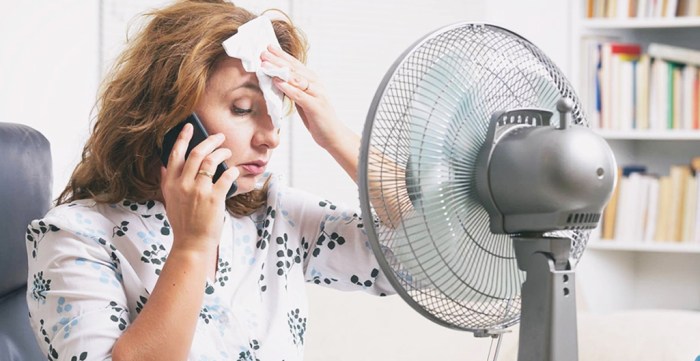Preparing your AC for summer: Essential Tips and Maintenance invites readers into the world of air conditioning maintenance, offering valuable insights and practical advice for ensuring your AC unit runs smoothly during the hot summer months. From checking air filters to testing the thermostat, this comprehensive guide covers all the necessary steps to keep your AC in top condition.
Checking the Air Filters
Regularly checking and replacing the air filters in your AC unit is crucial for maintaining its efficiency and performance. Clean air filters ensure proper airflow, improve indoor air quality, and help reduce energy consumption.
Importance of Clean Air Filters
- Dirty air filters restrict airflow, causing the AC unit to work harder and consume more energy.
- Clogged air filters can lead to poor indoor air quality as they are unable to trap dust, pollen, and other particles effectively.
- Regularly replacing air filters can prolong the lifespan of your AC unit by preventing strain on the system.
Frequency of Checking and Replacing Air Filters
- Check air filters at least once a month, especially during peak usage months.
- Replace air filters every 1-3 months, depending on factors like indoor air quality and pet presence.
Locating and Accessing Air Filters
- Air filters are typically located behind the return air grille or within the air handler unit.
- Refer to the AC unit’s manual or consult a professional to locate the air filters if you are unsure.
- To access the air filters, turn off the AC unit, remove the grille or access panel, and gently slide out the old filter for replacement.
Cleaning the Condenser Coils
When it comes to maintaining your AC system, cleaning the condenser coils is a crucial step to ensure optimal performance. Over time, dirt, debris, and dust can accumulate on the coils, reducing the unit’s efficiency and causing it to work harder to cool your home. This can lead to increased energy consumption and potential breakdowns if left unaddressed.
Methods for Safely Cleaning Condenser Coils
- Turn off the power: Before starting any cleaning process, make sure to turn off the power to the AC unit to avoid any accidents.
- Remove debris: Use a soft brush or vacuum to gently remove any visible debris and dirt from the coils. Be careful not to bend the fins during this process.
- Clean with water: Use a hose to spray water through the coils from the inside out. This will help dislodge any remaining dirt and debris stuck between the fins.
- Use coil cleaner: For more stubborn dirt buildup, consider using a commercial coil cleaner. Follow the manufacturer’s instructions carefully to ensure safe and effective cleaning.
- Straighten fins: If you notice any bent fins, gently straighten them using a fin comb to ensure proper airflow through the coils.
DIY Cleaning vs. Professional Cleaning Services
- DIY cleaning: Cleaning the condenser coils yourself can be a cost-effective option if you have the time and tools needed. However, it requires some knowledge and care to avoid damaging the coils or other components of the AC unit.
- Professional cleaning: Hiring a professional HVAC technician to clean the condenser coils can ensure a thorough and safe cleaning process. They have the expertise and equipment needed to effectively clean the coils without causing any damage to the unit.
Inspecting the Coolant Levels: Preparing Your AC For Summer

Inspecting the coolant levels in your AC unit is crucial for its optimal performance during the hot summer months. Adequate coolant levels help ensure that the air conditioner can effectively cool your home without putting unnecessary strain on the system.
To check and maintain proper coolant levels in your AC unit, you will need to follow these steps:
Checking Coolant Levels
- Turn off the power to the AC unit to avoid any accidents.
- Locate the access panel on the condenser unit.
- Using a screwdriver, remove the screws securing the panel in place.
- Once the panel is removed, locate the coolant lines that connect to the unit.
- Check the sight glass on the coolant line for bubbles, which indicate low coolant levels.
- If you suspect low coolant levels, it is best to contact a professional HVAC technician to refill the coolant.
Potential Risks of Low Coolant Levels, Preparing your AC for summer
Low coolant levels can lead to several issues with your AC unit, including:
- Poor cooling performance
- Increased energy consumption
- Compressor damage
- Potential breakdown of the entire system
It is essential to address low coolant levels promptly to prevent further damage to your AC unit and ensure efficient cooling in your home during the summer months.
Testing the Thermostat

To ensure your air conditioning system functions efficiently during the summer months, it is essential to test and calibrate the thermostat. The thermostat plays a crucial role in maintaining the desired indoor temperatures by regulating when the AC unit turns on and off.
Steps to Test and Calibrate the Thermostat
- Start by turning on the thermostat and setting it to a temperature lower than the current room temperature.
- Wait a few minutes to see if the AC unit kicks in to cool the room. If it doesn’t, there may be an issue with the thermostat.
- Use a separate thermometer to check the temperature near the thermostat to ensure it is accurate.
- If you suspect the thermostat is not reading the correct temperature, you can calibrate it following the manufacturer’s instructions.
- Consider upgrading to a programmable or smart thermostat for more precise temperature control.
Troubleshooting Tips for Common Thermostat Issues
- If the thermostat display is blank, check the batteries and replace them if necessary.
- Ensure the thermostat is clean and free from dust or debris that could affect its functionality.
- If the thermostat is unresponsive, check the circuit breaker to ensure the power is connected.
- Verify that the thermostat is set to ‘cool’ mode during the summer months.
- If you continue to experience issues with the thermostat, consider contacting a professional HVAC technician for assistance.
Final Review
In conclusion, Preparing your AC for summer: Essential Tips and Maintenance emphasizes the importance of regular maintenance to optimize your AC’s performance and longevity. By following these simple yet crucial steps, you can enjoy a cool and comfortable indoor environment throughout the summer season.
Regular AC maintenance is crucial for the efficiency of your cooling system. By ensuring that your AC is properly maintained, you can benefit from lower energy costs, improved air quality, and increased lifespan of your unit. To learn more about the benefits of regular AC maintenance, visit Benefits of regular AC maintenance.
Recognizing the signs that your AC needs maintenance is essential to prevent breakdowns and costly repairs. From strange noises to poor airflow, these warning signs can indicate underlying issues with your cooling system. For more information on signs that your AC needs maintenance, click on Signs that your AC needs maintenance.
To ensure that your air conditioner functions optimally, it’s important to follow the best maintenance tips. From changing filters regularly to scheduling professional tune-ups, these tips can help prolong the life of your AC unit and improve its performance. For the best air conditioner maintenance tips, visit Best air conditioner maintenance tips.